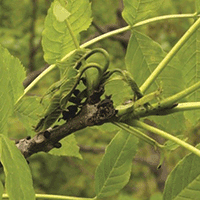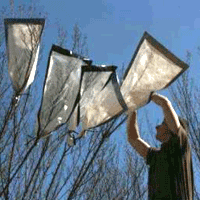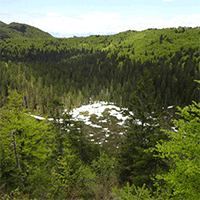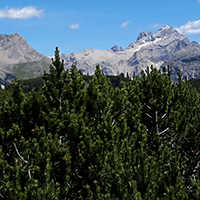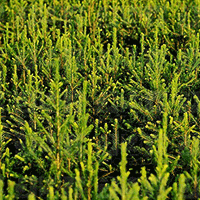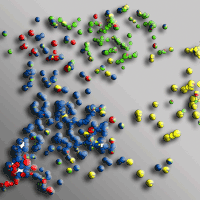
Indicators of drought effects in Pinus sylvestris: genetic analyses to corroborate the results of empirical methods
iForest - Biogeosciences and Forestry, Volume 3, Issue 4, Pages 89-91 (2010)
doi: https://doi.org/10.3832/ifor0539-003
Published: Jul 15, 2010 - Copyright © 2010 SISEF
Review Papers
Collection/Special Issue: NFZ Summer School 2009 - Birmensdorf (Switzerland)
Long-term ecosystem research: understanding the present to shape the future
Guest Editors: Marcus Schaub (WSL, Switzerland)
Abstract
Drought periods can be responsible for substantial damage in forests. Different studies have used empirical methods to measure the impact of drought on trees. More recently, huge advances in genomics have allowed finding potential genetic markers involved in drought resistance or tolerance. In this paper we review some empirical and genomic approaches that have been published in the literature. We suggest that a combination of these two types of approaches allows a better understanding of the mechanisms leading to drought resistance or tolerance.
Keywords
Authors’ Info
Authors’ address
Limnologische Station, Technische Universität München, Hofmark 1-3, D-82393 Iffeldorf (Germany)
UMR INRA/UHP 1136 “Interaction Arbres/Micro-organismes”, INRA Nancy, F-54280 Champenoux (France)
Corresponding author
Paper Info
Citation
Lechner RAB, Rigal A (2010). Indicators of drought effects in Pinus sylvestris: genetic analyses to corroborate the results of empirical methods. iForest 3: 89-91. - doi: 10.3832/ifor0539-003
Academic Editor
Marcus Schaub
Paper history
Received: May 25, 2010
Accepted: May 31, 2010
First online: Jul 15, 2010
Publication Date: Jul 15, 2010
Publication Time: 1.50 months
Copyright Information
© SISEF - The Italian Society of Silviculture and Forest Ecology 2010
Open Access
This article is distributed under the terms of the Creative Commons Attribution-Non Commercial 4.0 International (https://creativecommons.org/licenses/by-nc/4.0/), which permits unrestricted use, distribution, and reproduction in any medium, provided you give appropriate credit to the original author(s) and the source, provide a link to the Creative Commons license, and indicate if changes were made.
Web Metrics
Breakdown by View Type
Article Usage
Total Article Views: 55307
(from publication date up to now)
Breakdown by View Type
HTML Page Views: 47039
Abstract Page Views: 3190
PDF Downloads: 4055
Citation/Reference Downloads: 31
XML Downloads: 992
Web Metrics
Days since publication: 5630
Overall contacts: 55307
Avg. contacts per week: 68.77
Citation Metrics
Article Citations
Article citations are based on data periodically collected from the Clarivate Web of Science web site
(last update: Mar 2025)
Total number of cites (since 2010): 3
Average cites per year: 0.19
Publication Metrics
by Dimensions ©
Articles citing this article
List of the papers citing this article based on CrossRef Cited-by.
References
Seasonal needle growth of European larch in the alpine Engadine valley reveals strong advancement as the result of spring warming, WSL. [PLASE INSERT MORE DETAILS
Gscholar
Mykorrhiza - Eine faszinierende Lebensgemeinschaft im Wald. WSL 35 [PLEASE INSERT MORE DETAILS]
Gscholar
Contrasting patterns of selection at Pinus pinaster Ait. drought stress candidate genes as revealed by genetic differentiation analyses. Molecular Biology and Evolution 25 (2): 417-437.
CrossRef | Gscholar
Faible différentiation génétique, à partir d’amplification aléatoire d’ADN polymorphe (RAPD), entre les types de pin sylvestre (Pinus sylvestris L.) d’altitude et de plaine dans les alpes à climat continental. Annales of Forest Sciences 63: 431-439.
CrossRef | Gscholar
Hundreds of years long dynamics of needle tetention, needle longevity and annual needle loss reveald by the Needle Trace Method. WSL [PLEASE INSERT MORE DETAILS]
Gscholar
Photosynthetic Acclimation Is Reflected in Specific Patterns of Gene Expression in Drought-Stressed Loblolly Pine. Plant Physiology 133: 1702-1716.
CrossRef | Gscholar


